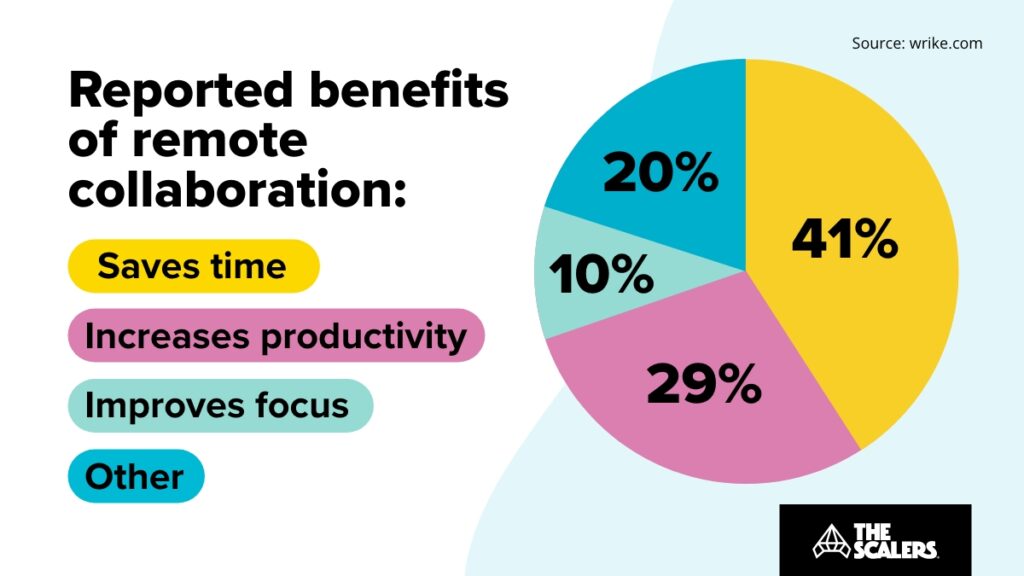Working remotely has many perks, both for a company and its employees. The freedom to work from wherever they want to is a huge draw for today’s millennial workforce. On the other hand, companies are no longer restricted by geographical obligations and can leverage talent from different countries and set up remote teams anywhere in the world.
A remote team means getting access to the best talent, irrespective of geography. However, does it always pay off? A study conducted by Gallup showed that remote employees are more likely to feel left out or isolated as compared to their onsite peers. The same study also proved that organisations with engaged employees outperform those with low employee engagement by over 202%!

How is this linked to remote teams?
When your team members are working in different parts of the world, it may seem like they’re missing out on connecting with each other and the company. If they find it difficult to engage with their fellow onsite employees, it may make bridging the culture gap difficult. This, in turn, can lead to reduced collaboration, lower productivity, and a higher turnover rate.
Building strong connections is an integral part of building a strong business, and it’s no different with remote teams. Remote work doesn’t have to be isolating if handled the right way.
As the experts in building engaged remote teams, we’ve outlined four ways to make your remote teams feel like they belong to a close-knit organisation, no matter how far apart they may be.

Your crash course on everything offshoring. What is it? How does it work? Is it for you?
DOWNLOAD EBOOKEstablish Smart Communication Channels
Gone are the days when you’d send off an email to a teammate and dwindle your thumbs until you receive a response. In today’s fast-paced work environment, instant messaging has gained popularity like no other. To make your remote teams feel connected to each other, irrespective of their geographical location, remote working tools are a must. One such popular tool is Slack.
Slack is an instant messaging tool that organises conversations into channels based on the teams, projects, or even office location in the case of remote teams. You can also communicate with different team members on a 1-1 basis, share pictures, videos, files, and even star messages that you would need at a later point.
Why is this so important?
Using instant messaging channels like Slack or even Skype allows remote team members to feel like they can get a hold of someone quickly if they need to, rather than feeling helpless, waiting for an email. And your Slack channels doesn’t always have to be all work and no play! You can even create general channels that allow your team members to chat about topics that are unrelated to work-food, football, even memes – you name it. One big work-family!

Practice face-time
A study of 1100 remote employees conducted by Harvard Business Review brought to light some interesting facts. One in every four respondents said that managers who insisted on some face-time with their remote employees were more successful. That’s 25% of all remote workers! That’s a statistic you cannot ignore.
Only 46% of the respondents agreed that their manager checks-in with them regularly. This means that over half of the managers of remote teams do not practice face-time with their team – a rookie mistake.
When working with remote groups that you cannot physically meet, your best bet is video calls. It is recommended that both the local and remote teams check-in with each other at least once a week. Take this time to discuss the progress of the project, what the latest developments are, if the team is facing any roadblocks and any general points that you want to touch on.
You can even go the extra mile and visit your remote employees once a quarter, or at least once a year. Use the valuable time to indulge in team-building activities, which, in turn, will make them feel engaged and appreciated.

Recognize and acknowledge efforts
If you want to thank one of your local employees for their incredible contribution to a project, a pat on their back, a few words of appreciation, and maybe a couple of beers after work will do the trick.
However, recognition and acknowledgment with remote employees can be a different ballgame. For instance, how do you assess the contribution of a remote employee when all you have are elaborately outlined project reports and task tracking systems? Though it’s not always easy, it is extremely crucial nonetheless.

in Bangalore
Speed up your software delivery with an integrated and dedicated team
LEARN MORESo, what can you do?
A quick video-call always does the trick! Positive recognition goes a long way in affirming good behaviors and can improve an employee’s performance significantly. On the other hand, constructive criticism is crucial in helping remote employees grow and improve their skills. Your remote team does not want to be stuck in a career rut, constantly contemplating if their contribution is significant enough. So always take the time to recognize, acknowledge, and provide feedback – it’s the little things that matter the most.

Plan a yearly company retreat
A yearly company retreat is one of the best ways to get to know your remote team in person and help them build stronger connections with your local team.
A workation of sorts will allow all your employees to get together and share their ideas on different projects, work together, and set goals for the next year. But a yearly retreat shouldn’t only focus on work. Make sure your team has free time during the retreat to hang out and get to know each other. You should also plan fun activities and outings;
Your team members feeling connected to each other will improve their collaboration skills and, ultimately, the quality of work they produce.
By implementing these small changes, you can see an incredible difference in how your remote team collaborates with your local team and vice versa. All these changes are super easy to implement – it’s just about using the same processes and channels that you use with your local team as effectively as possible so that your remote team feels like a part of your HQ. If you are looking to set up a remote software development team in India, feel free to reach out to us via the contact form, and we will get back to you.
















